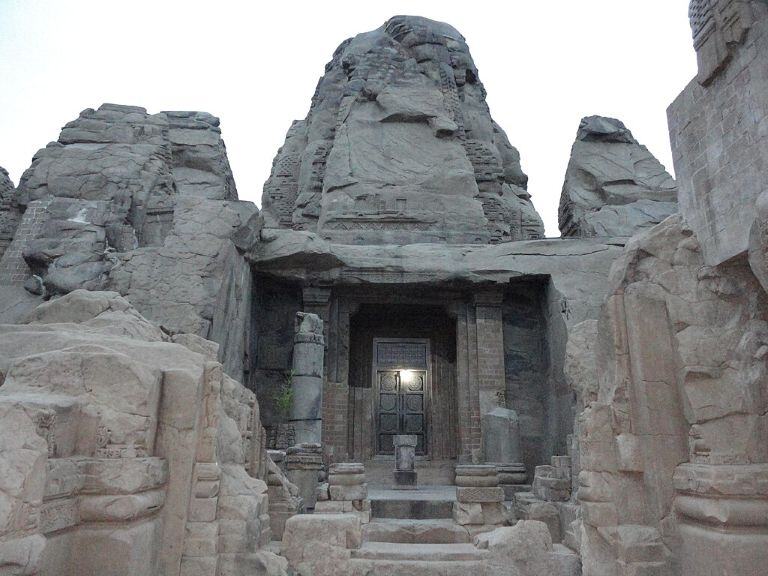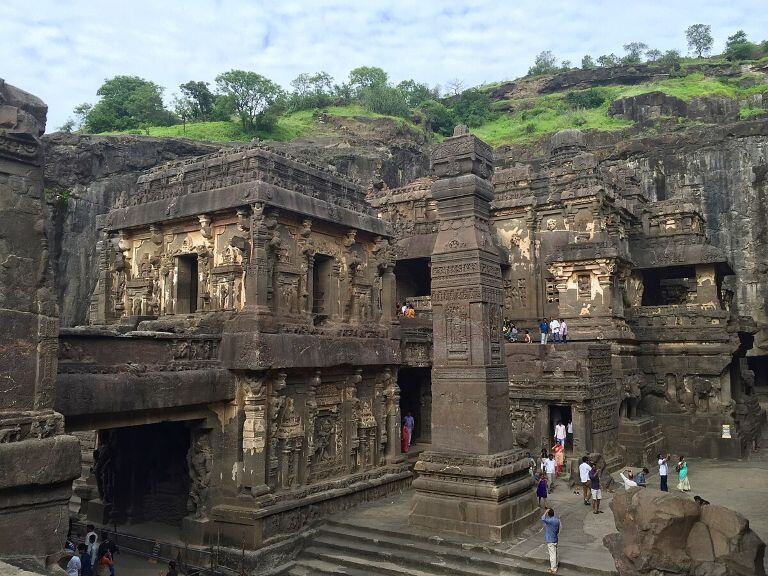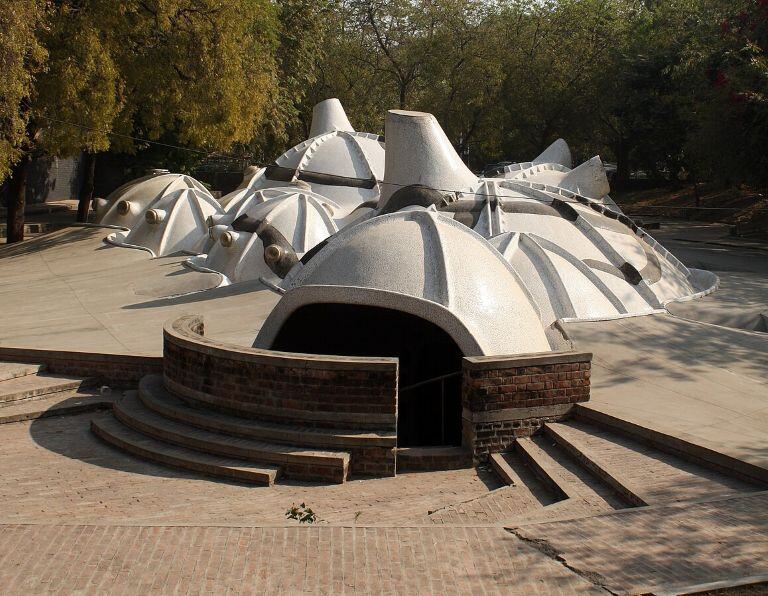
Indian architectural styles have played an important role in reflecting the country’s religious, cultural, and technological advancements. While visiting the regions in India, travellers can witness designs which range from ancient stone carvings to towering skyscrapers, as every structure in the country has a unique story.
The history of Indian architecture is diverse, as most of the designs were shaped by kings, artists, engineers and invaders. Each structure is a major part of the architectural heritage of India, including the peaceful temples located within hills and modern glass buildings in the city. Let's explore the evolution of Indian architecture and highlight the country's various styles, features, and popular examples.
If you are an architectural enthusiast of ancient and modern designs, explore our BIM For Architects Course to learn more about architecture's historical and modern evolution.
History & Evolution of Indian Architecture
The history of Indian architecture dates back over 2,500 years, during the Indus Valley Civilisation. Some of the major types of architecture in India are depicted by the excavations in Harappa and Mohenjo-Daro, which show well-planned cities with brick houses, drainage systems, and public baths. These early designs reflect the strong sense of urban planning within the country.
Ancient Indian Architecture
From 300 BCE to 1200 CE, ancient Indian architecture evolved by introducing structures such as stupas and rock-cut temples, making it a major part of the country's historical heritage. These structures were mostly carved within mountains and were important to the people of India. They showcased the people’s religious beliefs of Jainism, Hinduism, and Buddhism. Some of the popular examples include the Ajanta and Ellora caves in Maharashtra.
Medieval Period
From 1200 CE to 1800 CE, the medieval period, Indian architectural styles underwent some major changes. During this period, Islamic rulers arrived in the country and introduced structures such as domes, arches, and minarets. This created a unique blend of Indian and Islamic designs currently known as Indo-Islamic architecture. Additionally, architectural designs were taken even further during the Mughal period with the rise of some world-famous structures, such as the Taj Mahal and Humayun’s Tomb.
Colonial Influence
During British rule in India, European architectural designs were introduced within the country’s cities. The British built churches, railway stations, and government buildings using unique styles, including Gothic, Victorian, and Neoclassical styles. This period marked the introduction of concrete and steel in Indian architecture design.
Post-Independence and Modern Era
After the country acquired its independence in 1947, there was a major focus on modern Indian architecture based on functionality and urban needs. Some architects, including Le Corbusier and Charles Correa, led the major architectural designs of planned cities and residential colonies. Today, the country is introducing smart cities, green buildings, and towering skyscrapers, which are reshaping the architectural evolution of urban India.
Types of Indian Architecture

Various types of architecture in India are diverse and play a major part in reflecting the country's geography, religions, and historical heritage. Some of the major styles in India include:
Rock-Cut Architecture
This includes temples and monasteries which were carved into rock. Some of the examples include the Ajanta and Elephanta caves.
Buddhist Architecture
This style includes stupas and monasteries with domes and gateways. One example is the Sanchi Stupa.
Hindu Temple Architecture
This style varies by region in India. Some temple architectural styles include the Nagara style, located in North India, the Dravidian style within South India, and the Vesara style, which can be found in North and South India.
Jain Architecture
This includes temples with white marble and detailed carvings. One of the major examples is the Dilwara Temples in Rajasthan.
Islamic Architecture
The Islamic rule architectural styles include Arches, domes, unique carvings and indoor designs, which can be found in mosques, tombs, and forts.
Colonial Architecture
Colonial architectural style involves European-based buildings that were built during British, Portuguese, and French rule.
Traditional Indian Architecture
These reflect the local way of life of the Indian people with the vernacular styles based on local climate and materials. Some examples include mud huts or bamboo homes.
Modern Indian Architecture:
These are the architectural styles introduced during the independence period, which include skyscrapers, apartments, and institutional buildings built with steel, glass, and concrete.
Sustainable Architecture:
These include eco-friendly buildings which use renewable resources and smart technology.
Postmodern Architecture:
This style involves old and new elements, often seen in commercial and cultural buildings.
Key Features of Indian Architecture
Below are some of the common features that define Indian architecture styles across the different historical periods:
- Use of Natural Materials: Stone, brick, wood, and clay in traditional designs.
- Intricate Carvings: These are found within temples, forts, and palaces across India.
- Domes and Arches: Mostly found in Islamic and Mughal structures.
- Courtyards and Verandas: Introduced mainly for better ventilation and social space.
- Water Tanks and Stepwells: Used for water conservation and community gatherings.
- Symmetry and Geometry: Can be found in both ancient and modern Indian architecture buildings.
- Use of Colour and Symbolism: The religious themes, motifs, and stories carved or painted onto walls.
- Orientation with Nature: Includes many buildings aligned with sunlight or cardinal directions.
- Fusion of Styles: Multiple cultures have blended their design principles over the centuries.
10 Examples of Great Architecture in India
Below are ten iconic structures that represent the art and architecture of India across different eras from ancient times to the modern day:
1. Ajanta Caves, Maharashtra
The Ajanta Caves are ancient Buddhist rock-cut caves with frescoes and sculptures. They are among the major examples of the early rock-cut architecture.
2. Brihadeeswara Temple, Tamil Nadu
The Brihadeeswara Temple was built in the 11th century under the Chola dynasty, and it reflects Dravidian temple architecture with a towering vimana.
3. Sun Temple, Konark, Odisha
The Sun Temple in Odisha is shaped like a chariot and is a 13th-century temple known for its detailed carvings and symbolic design.
4. Taj Mahal, Agra
The Taj Mahal in Agra is a 17th-century marble mausoleum built by the Mughals. This mausoleum combines Persian, Islamic, and Indian design elements, making it a unique architectural structure in India.
5. Victoria Memorial, Kolkata
This is a colonial-era structure which was built in honour of Queen Victoria. It plays a major role in showcasing British architecture in India.
6. Lutyens’ Delhi, New Delhi
Edwin Lutyens designed Lutyens’ Delhi during the British Raj. It has an architectural design which features the Rashtrapati Bhavan and India Gate.
7. Lotus Temple, Delhi
The Lotus Temple is a modern Baha'i house of worship shaped like a lotus. It represents the spiritual inclusiveness and modern design in India.
8. Chandigarh Capitol Complex, Punjab
Le Corbusier planned the Chandigarh Capitol Complex, a post-independence structure that is a model of modern Indian architecture.
9. Infosys Campus, Mysore
Infosys Campus in Mysore has a unique blend of classical and modern design. It showcases the rise of tech campuses in the 21st century.
10. Antilia, Mumbai
Antilia is one of the world's tallest and most expensive private homes. It is a symbol of modern luxury and vertical design.
Conclusion
The journey of Indian architecture from ancient stone carvings to futuristic buildings is a unique story of creativity, faith, and adaptation. From different phases, whether ancient Indian architecture, colonial influences, or today’s smart cities, India has completely evolved to its unique design identity. The various Indian architecture styles reflect not only artistic growth but also social, environmental, and technological evolution. As the times keep changing, the fusion of tradition and innovation will continue to shape the great architecture in India that bridges the past, present, and future.
To become an expert in modern architectural design practices, enroll in some of the courses offered by Novatr including BIM For Architects. This course provides insights on architectural building designs in the real world.
Explore the ancient and modern methods that play a major role in today’s architectural designs by visiting Novatr's website. View our resource page for AEC ideas and updates.
Was this content helpful to you









